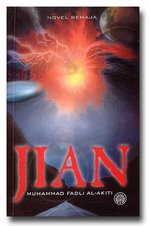NAGA. A snake, especially the cobra-capella. A mythical semi-divine being, having a human face with the tail of a serpent, and the expended neck of the cobra. The race of Nagas is said to be a thousand in number, and to have sprung from Kadru, the wife of Kasyapa, for the purpose of peopling Patala, or the regions below the earth (fadz: bandingkan dengan perumpamaan Arab-Melayu, kerajaan/negeri bawah angin), where they reign in great splendour. From the name of their mother they are called Kadraveyas. Their mother is sometimes called Su-rasa. This dominion was taken from them by the Gandharvas, but they recovered it through their sister, the Narmada river, who induced Vishnu to send Pratardana to their assistance. Their females were handsome, and some intermarried with men, as Ulupi with Arjuna.
The Nagas, or a people bearing the same name, are historical, and have left many traces behind them. There were mountains so called, and Naga-dwipa was one of the seven divisions of Bharata-varsha. Kings of this race reigned at Mathura, Padmavati, &c., and the name survives in the modern Nagpur. There are various speculations as to who and what they were, but it seems clear they were a race distinct from the Hindus. The mythological accounts are probably based upon the historical, but they have been mixed up together and confused. The favourite theory is that they were a Scythic race, probably obtained their name from worshiping serpents or holding them in awe or reverence.
NAGA-LOKA. Patala, the residence of the Nagas.
PATALA. The infernal (fadz: neraka/dasyat/chaos) regions, inhabited by Nagas (serpents), Daityas, Danavas, Yakshahs, and others. They are seven in number, and their names, according to the Vishnu Purana, are Atala, Vitala, Nitala, Gabhastimat, Mahatala, Sutala, and Patala, but these names vary in different authorities. The Padma Purana gives the names of the seven regions and their respective rulers as follow :-(1.) Atala, subject to Maha-maya ; (2.) Vitala, ruled by a form of Siva called Hatakeswara ; (3.) Sutala, ruled by Bali ; (4.) Talatala, ruled by Maya ; (5.) Mahatala, where reside the great serpents ; (6.) Rasatala, where the Daityas and Danavas dwell ; (7.) Patala, the lowermost, in which Vasuki reigns over the chief Nagas or snake-gods. In the Siva Purana there are eight : Patala. Tala, Atala, Vitala, Tala, Vidhi-patala, Sakara-bhumi, and Vijaya. The sage Narada paid a visit to these regions, and on his return to the skies gave a glowing account of them, declaring them to be far more delightful than Indra's heaven, and abounding with every kind of luxury and sensual gratification.
BHARATA-VARSHA. India, as having been the kingdom of Bharata. It is divided into nine Khandas or parts : Indra-dwipa, Kaserumat, Tamra-varna, Gabhastimat, Naga-dwipa, Saumya, Gandharva, Varuna.
Dowson, John, 1982. A Classical Dictionary of Hindu Mythology & Religion. New Delhi: Rupa.Co.



















No comments:
Post a Comment